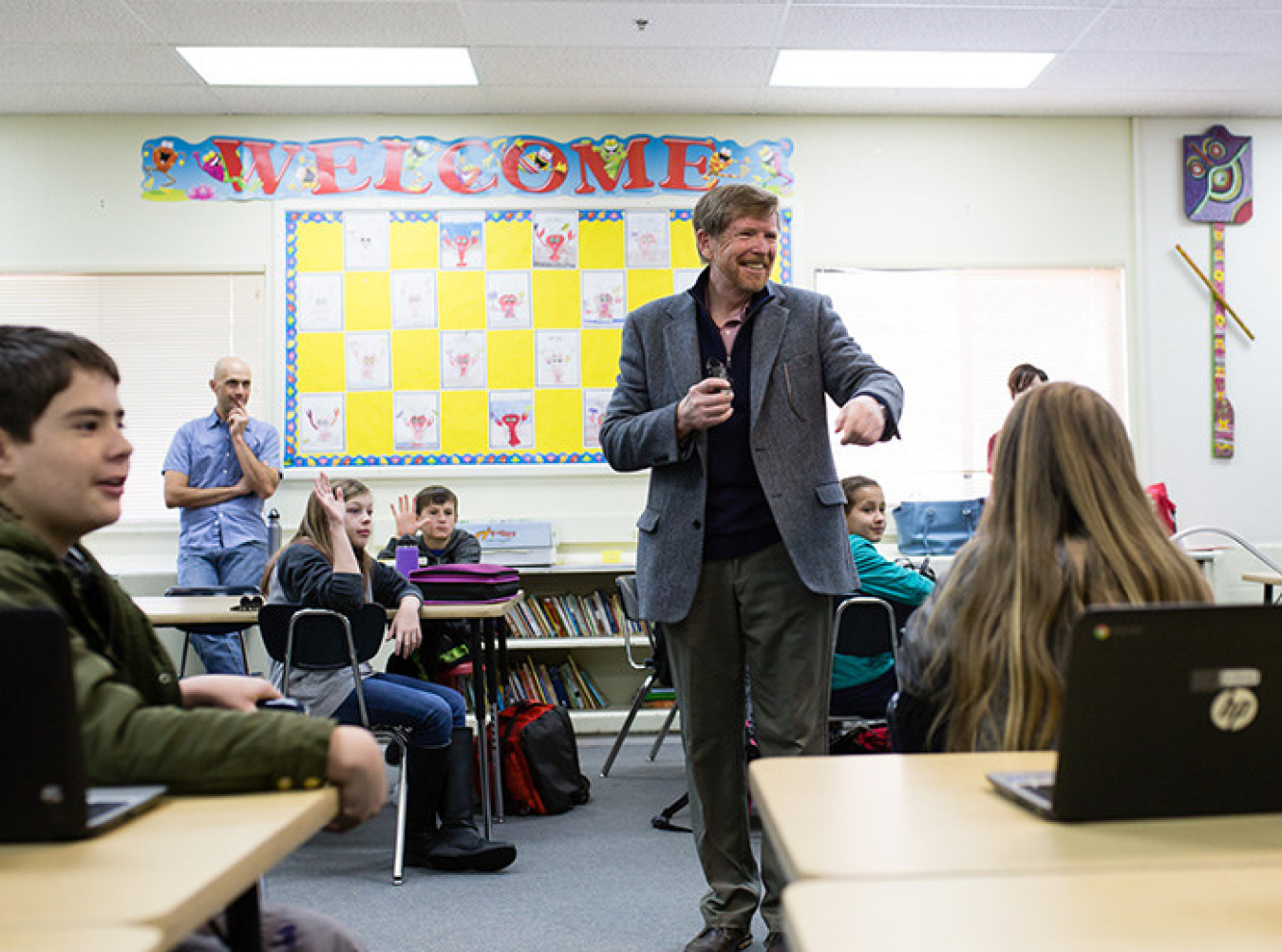Terry Wallace Jr., Director of Los Alamos National Laboratory, shares what's at the heart of STEM outreach for his Lab.
March 29, 2018
While growing up in northern New Mexico, I was fascinated by the world around me — or more specifically, the world beneath my feet. I was intrigued by the exotic land forms, the mysterious colors, the textures of rocks, and the stories they told about the Earth’s earliest days. It’s hard to predict what will spark scientific curiosity in a child. For me, it was mineralogy and the origin of the Earth. For others, it might be stargazing and wondering how the universe came into being, how cars work, why animal herds migrate, or how disease spreads. My parents fostered my passion, spending countless hours and walking hundreds of miles on mineral and fossil hunting expeditions. Those adventures ignited my love for the outdoors and geology that culminated in a Ph.D. in geophysics. Today, as director of Los Alamos National Laboratory, I consider how we can spark scientific curiosity in young people and how to increase science literacy in this country.
The United States enjoys many of the best science and engineering universities in the world, but increasingly, American students are not pursuing degrees in the STEM fields. International students constitute the majority of full-time students in some physical sciences, and their numbers are rising much faster than our domestic counterparts. For example, in physics, a field of particular interest to Los Alamos, nearly 45 percent of doctoral degrees are awarded to foreign students. These international students are educated in the United States and are valuable not only to their home countries but to the world’s scientific community. International collaboration is important. Last year, nearly 500 foreign national employees and students worked at the Laboratory, but most national security work requires US citizenship and so Los Alamos must look for ways to bring more American students to science, math, and engineering.

Since 1998, the Los Alamos Employees’ Scholarship Fund has awarded $6.1 million to nearly 1,400 students from the seven counties that comprise northern New Mexico to pursue education in fields that will serve our region. Among the recipients was Charlyna Gonzales, a first-generation college student from the small village of Peñasco (pop. 1,200), who is studying biomedical engineering and physics at Colby College in Maine. What spurred her curiosity? A knee injury while playing volleyball. “My injury made me want to find out more about [medicine],” she said. “I did a ton of research at the time, asking questions like, why did this happen to me? Why are women more susceptible to knee injuries?”

Not everyone wants a career in science or engineering, but in a world where technology plays such a critical role in our lives, virtually every career will require a basic understanding of math and science. Programs such as Hour of Code teach elementary school students how to do computer coding, partnerships with local school districts to improve teacher education, and outreach to students of all ages through our Bradbury Science Museum are focused on improving science literacy.
Recently, I was asked what is the most important question a child should ask, and my answer was easy: “Why?”
This simple, three-letter word leads to exploration and insight, whether in a child’s expedition or at a national laboratory. At its heart, STEM education encourages children to ask why and helps them find the answers. In doing so, they never stop learning—and we never stop discovering.
Terry C. Wallace, Jr.
Dr. Terry C. Wallace, Jr, is the 11th director of Los Alamos National Laboratory and current president of Los Alamos National Security, LLC. Los Alamos has played a role in some of the most transformational discoveries of the 20th and 21st centuries. As a premier national nuclear science laboratory, Los Alamos is a principal contributor to the U.S. Department of Energy mission to maintain the nation’s nuclear weapons stockpile but also protects the nation through programs in nuclear counterproliferation and nonproliferation. Los Alamos creates innovative science and technology that define the state of the art, and 2018 marks our 75th anniversary of joining the Manhattan Project, followed by our first intelligence mission the subsequent year.
Prior to becoming Laboratory Director, Wallace was the Laboratory’s Principal Associate Director for Global Security and the Senior Intelligence Executive, leading national security programs—nonproliferation, counterproliferation, and industry partnerships. He served as the Principal Associate Director for Science, Technology, and Engineering and led implementation of the capability model for scientists and engineers and developed the science pillars that guide our institutional investment strategies. He has represented Los Alamos and DOE around the world, meeting with scientists and leaders of allied countries and attending significant collaborations with non-NATO countries.
Wallace is an internationally recognized scientific authority on geophysics and forensic seismology, which is the study of earthquakes and seismic waves as they relate to nuclear weapons testing, and he has evaluated more than 1,700 US and foreign nuclear tests. He is one of a few scientists to have a newly discovered mineral named in his honor for his efforts in education, research, and service to mineralogy (Terrywallaceite). He is a Fellow in the American Geophysical Union and has served on the Board of Earth Sciences & Resources in the National Academy of Science. His awards include the Brown Medal, the Langmuir Medal for Research, the Macelwane Medal, and the Carnegie Mineralogical Award. He was a distinguished educator at the University of Arizona for 20 years and continues to be a notable author through peer-reviewed journals, science magazines, a college textbook, and a blog exploring the nexus of science, running, and travel.
Wallace was raised in Los Alamos and is the first Laboratory Director with such a strong tie to New Mexico. He holds doctorate and master’s degrees in geophysics from the California Institute of Technology and bachelor’s degrees in geophysics and mathematics from New Mexico Institute of Mining and Technology.

